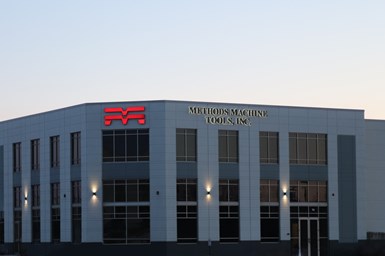Methods Moves Chicago Technical Center to Gilberts
Methods Machine Tools has moved its Chicago Technical Center from Elgin, Illinois, to Gilberts, Illinois, saying the new facility will speed up repair and installation times.
Share






Methods Machine Tools Inc., has moved its Chicago Technical Center from Elgin, Illinois, to Gilberts, Illinois. All other contact information, including telephone numbers and phone extensions, remains the same.
Methods says it relocated to a larger facility to expand its customer services in the Midwest.
“We examine everything through a customer-focused lens,” says Don Miller, general manager of Methods’ Chicago Technical Center. “The move to Gilberts will ensure Methods has the resources to continue to provide world-class customer service and support while positioning us for enduring growth.”
The new technical center features a more extensive showroom and service area totaling approximately 36,000 square feet. These facility improvements will give customers a comprehensive, hands-on experience with Methods’ products as well as enhance customer support through quicker machine/automation cell installations, repairs and preventative maintenance measures.
Methods plans to add a parts depot to the facility, which it says will enable quicker delivery of parts throughout the Midwest. Miller added that the parts depot will enable many Midwest customers to have parts within a four-hour window.
"I'm extremely proud of everyone who helped with the move, and for the entire Illinois staff, who stayed on task during the move," Miller says. "The move to Gilberts was a seamless transition during uneasy circumstances, but we met our target move-in date in a safe, efficient manner without compromising customer commitments.”
Related Content
-
Ballbar Testing Benefits Low-Volume Manufacturing
Thanks to ballbar testing with a Renishaw QC20-W, the Autodesk Technology Centers now have more confidence in their machine tools.
-
Lean Approach to Automated Machine Tending Delivers Quicker Paths to Success
Almost any shop can automate at least some of its production, even in low-volume, high-mix applications. The key to getting started is finding the simplest solutions that fit your requirements. It helps to work with an automation partner that understands your needs.
-
How to Successfully Adopt Five-Axis Machining
While there are many changes to adopt when moving to five-axis, they all compliment the overall goal of better parts through less operations.
























